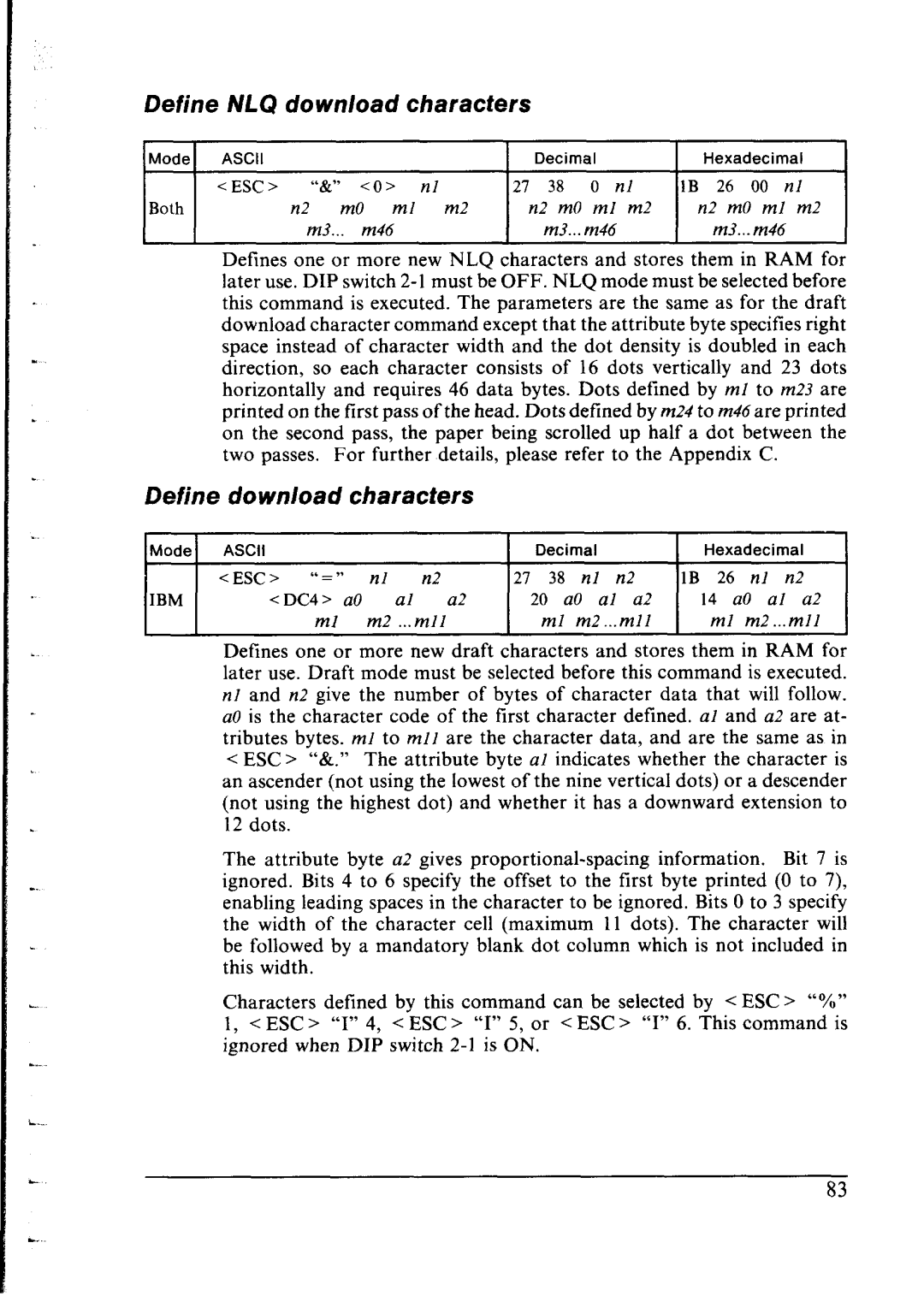
Define NLQ download characters
Mode
Both
ASCII |
|
|
| Decimal |
|
| Hexadecimal |
| |
<ESC> | “&” | CO> | nl | 27 38 | 0 | nl | 1B 26 | 00 | nl |
n2 | m0 ml | m2 | n2 m0 | ml | m2 | n2 m0 | ml | m2 | |
| m3... | m46 |
| m3... m46 | m3... m46 | ||||
Defines one or more new NLQ characters and stores them in RAM for later use. DIP switch
this command is executed. The parameters are the same as for the draft download character command except that the attribute byte specifies right space instead of character width and the dot density is doubled in each
direction, so each character consists of 16 dots vertically and 23 dots
horizontally and requires 46 data bytes. Dots defined by ml to m23 are printed on the first pass of the head. Dots defined by m24 to m46 are printed on the second pass, the paper being scrolled up half a dot between the
two passes. For further details, please refer to the Appendix C.
Define | download | characters |
|
|
|
|
|
| |||
Modt ? | ASCII |
|
|
|
| Decimal |
| Hexadecimal |
| ||
| <ESC> | “=I’ |
| nl | n2 | 21 | 38 nl | n2 | 1B 26 | nl | n2 |
IBM |
| <DC4> | a0 | al | a2 | 20 | a0 al | a2 | 14 | a0 al | a2 |
t |
| ml |
| m2 ...mll | ml m2 ...mll | ml m2 ...mll | |||||
|
|
|
|
|
|
|
|
|
|
| |
Defines one or more new draft characters and stores them in RAM for later use. Draft mode must be selected before this command is executed.
nl and n2 give the number of bytes of character data that will follow. a0 is the character code of the first character defined. al and a2 are at- tributes bytes. ml to ml1 are the character data, and are the same as in
<ESC > “&.” The attribute byte al indicates whether the character is an ascender (not using the lowest of the nine vertical dots) or a descender (not using the highest dot) and whether it has a downward extension to 12 dots.
The | attribute | byte a2 gives | information. | Bit | 7 is | ||||||
ignored. | Bits 4 to 6 specify the offset to the first byte printed (0 to 7), | ||||||||||
enabling | leading | spaces in the character to | be ignored. | Bits | 0 | to 3 specify | |||||
the | width | of | the | character | cell (maximum | 11 | dots). | The | character | will | |
be | followed | by a | mandatory | blank dot column | which | is not | included | in | |||
this | width. |
|
|
|
|
|
|
|
|
| |
Characters defined by this command can be selected by < ESC > “%” 1, < ESC > “I” 4, < ESC > “I” 5, or < ESC > “I” 6. This command is ignored when DIP switch
